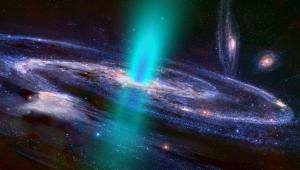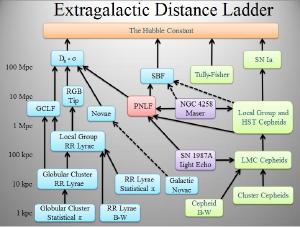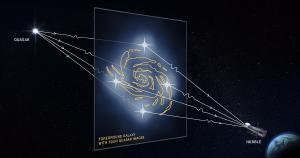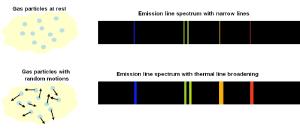Blog
Old Speckled Hen
24 April 2021
 ParallelVision, Pixabay
ParallelVision, PixabayOne of the biggest challenges to measuring the expansion of the universe is the fact that many of the methods we use are model-dependent. The most famous example is the use of distant supernovae, where we compare the standard brightness of a Type Ia supernova with their apparent brightness to find their distance. But knowing the standard brightness depends upon comparing them to the brightness of Cepheid variables which is in turn determined by measuring the distances of nearby stars via parallax. Every step of this cosmic distance ladder depends upon the step before it.
 Wikipedia user Brews O’Hare
Wikipedia user Brews O’HareThis doesn’t mean our distance measurements are necessarily wrong, but it makes them more vulnerable to systematic errors. In recent years it has become clear that our various measures of cosmic expansion don’t quite agree, so either a systematic error has crept into our data, or something is wrong with our cosmological model. One way out of this mess would be to find new ways of measuring cosmic expansion. Preferably methods that aren’t model dependent. We’ve made quite a bit of progress in this area. Methods using phenomena such as astronomical masers and gravitational waves have shown a lot of promise. And a recent study in Physical Review A introduces a method using quasars and gravitational lensing.1
 NASA, ESA and D. Player (STScI)
NASA, ESA and D. Player (STScI)Quasars are incredibly bright and distant objects. They are powered by active supermassive black holes in young galaxies. The light we see from quasars has traveled for billions of years to reach us, and so it is redshifted by the expansion of the universe during that time. Rather than trying to measure the distance of these quasars, this new method looks at quasars that are gravitationally lensed by closer galaxies.
When a galaxy is between us and a distant quasar, the gravitational mass of the galaxy bends quasar light around the galaxy. As a result, we can often see multiple images of the quasar rather than a single image. Each of these images is the result of a different path of light as it is lensed by the galaxy. Because of gravitational lensing, the light paths of these images can differ in distance by dozens of light-years. So the quasar images we see can differ in age by decades. Since the universe is always expanding, a younger quasar image will be redshifted less than an older one.
The idea behind this new work is wonderfully simple. Just compare the redshifts of the lensed quasar images near a galaxy, and you can determine how much the universe expanded over a decade or century. Do this with galaxies at various distances, and you can determine not only the rate of cosmic expansion but whether that rate has changed over time.
 Swinburne University of Technology
Swinburne University of TechnologyIn practice, comparing these redshifts is very difficult. The redshift difference between two quasar images is extremely small, and since the light has traveled so far its spectral lines are blurred by the gas it has passed through to reach us. It’s an effect known as Doppler broadening. So we can’t compare the redshifts directly.
To overcome this problem, the team proposes a method using intensity correlation speckles. The method takes the Doppler broadened light of a quasar image and compresses it into an average line. Since two lensed images will have a similar Doppler broadening when compressed their main difference will be their difference in redshift. The two images can then be compared by the way they interfere or speckle. It’s an optical effect similar to the way two slightly different musical notes can interfere to create a warbling tone.
In principle, this method could give us a detailed measure of the evolution of cosmic expansion, and might settle the tension of modern cosmology. The next step is to create a detector for ground-based telescopes that could make such a measurement.
Merlin, R., et al. “Intensity correlation speckles as a technique for removing Doppler broadening.” Physical Review A 103.4 (2021): L041701. ↩︎